Legs Have Blue and Red Veins Showing Through at Foot
Spider and Varicose Veins Slideshow
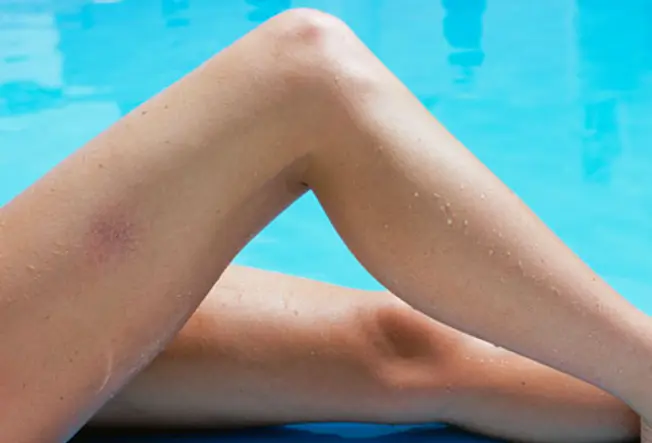
Spider Veins and Varicose Veins
1/19
Spider veins and varicose veins are practically a rite of passage. As we age, many of us find the jagged purple lines or swollen bluish cords spreading across our thighs and calves. These warped blood vessels occur in up to 60% of adults. Find out exactly what they are, what causes them, and how to make them disappear -- and see undoctored before-and-after pictures that meet WebMD's editorial standards.

What Are Spider Veins?
2/19
Spider veins are small, twisted blood vessels that are visible through the skin. They may be red, purple, or blue and most often appear on the legs or face. They take their name from their striking spiderweb pattern.

What Are Varicose Veins?
3/19
Varicose veins are larger blood vessels that have become swollen and twisted. They appear dark blue and stick out from the skin like raised tunnels. Varicose veins can develop anywhere in the body, but usually sprout on the legs and ankles.
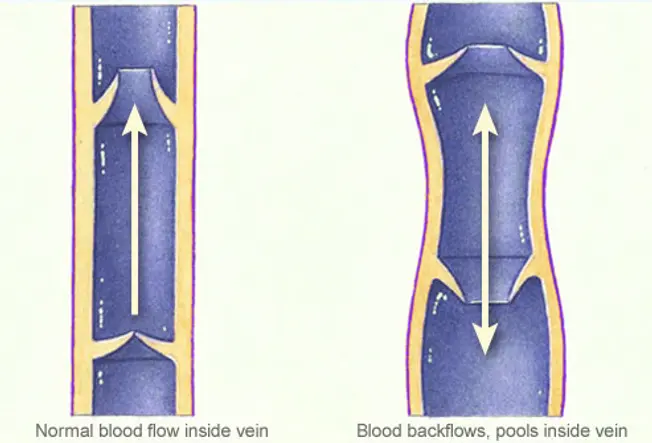
What Causes Spider/Varicose Veins?
4/19
Healthy veins carry blood to the heart through a series of one-way valves. These valves allow blood to flow in the right direction from superficial veins to deeper veins and to the heart. The vessels are surrounded by muscles which contract and help pump blood to the heart. Normally the veins have a one-way valve to prevent backflow. However, problems with the valves, muscles or blood itself can allow blood to pool inside the vein. As blood pools within the vein, pressure builds and the vessel wall weakens. As a result, the vein tends to bulge and twist. Depending on the size of the blood vessel and extent of swelling, the result is a spider vein or varicose vein.
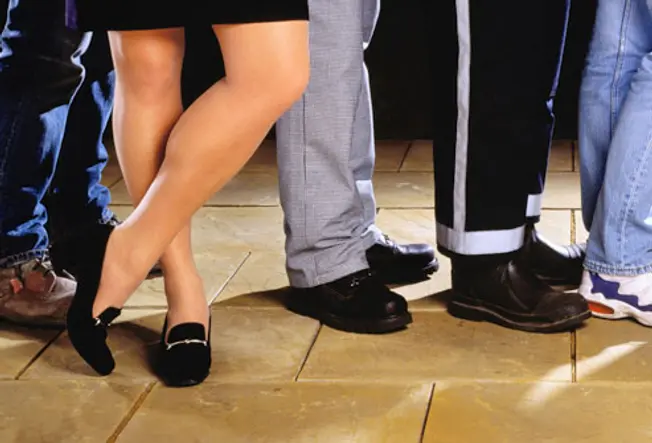
Who Gets Spider/Varicose Veins?
5/19
Anyone can get spider veins or varicose veins, but women are twice as susceptible as men. The problem is also more common in people with jobs that keep them on their feet, including nurses and teachers. Other factors that may contribute include aging, obesity, pregnancy, prior trauma, or surgery to the leg and a genetic predisposition.
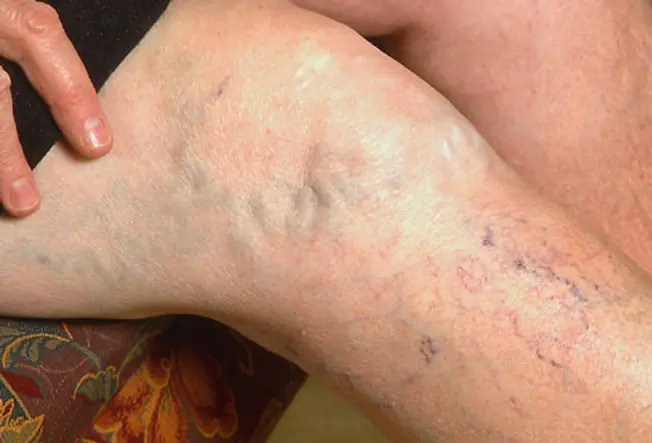
Spider/Varicose Vein Symptoms
6/19
For some people, spider veins and varicose veins are more than an eyesore. Varicose veins in particular may cause aching or cramping in the legs. The affected area may throb, burn, tingle, or feel heavy. Severely inflamed veins can be tender to the touch and may reduce circulation, leading to itchy, swollen ankles. They can also produce chronic skin and tissue changes such as discoloration and ulceration of the skin.
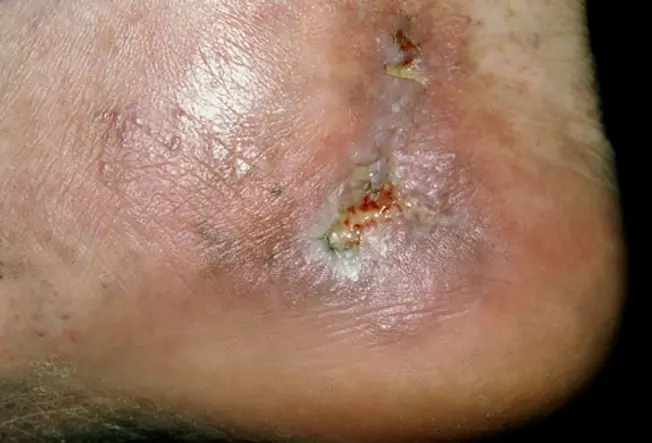
Spider/Varicose Vein Complications
7/19
Spider veins and varicose veins may be unsightly and annoying, but they rarely pose a serious health threat. Occasionally, they may contribute to ulcers forming-- large sores in the skin -- especially near the ankles. Varicose veins can also form painful blood clots.
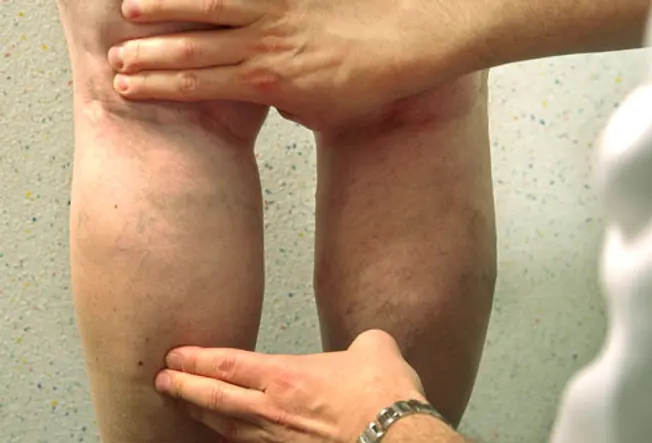
Diagnosing Spider/Varicose Veins
8/19
Spider veins and varicose veins are easy to diagnose. Your doctor simply looks at the patterns on your legs, feet, or other affected areas. They will also check for swelling, tender spots, ulcers, and changes in skin color. Most spider veins and varicose veins don't need to be treated, unless they result in ulcers, bleeding, and phlebitis, or because you want them removed for cosmetic reasons. If the veins are causing pain, soreness, and muscle fatigue or cramping, there are steps you can take at home to reduce the symptoms.
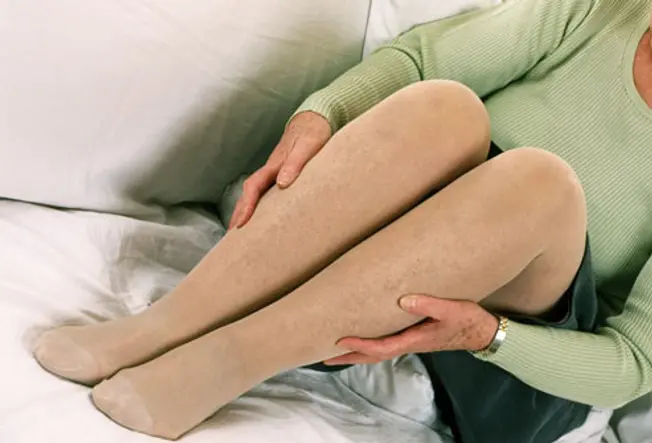
Treatment: Support Stockings
9/19
The simplest treatment for spider veins and varicose veins is to pull on a pair of support stockings. Sometimes called compression stockings, they improve circulation and relieve pain and discomfort in the legs. You can find them in knee-high or pantyhose style at surgical supply stores and some pharmacies.
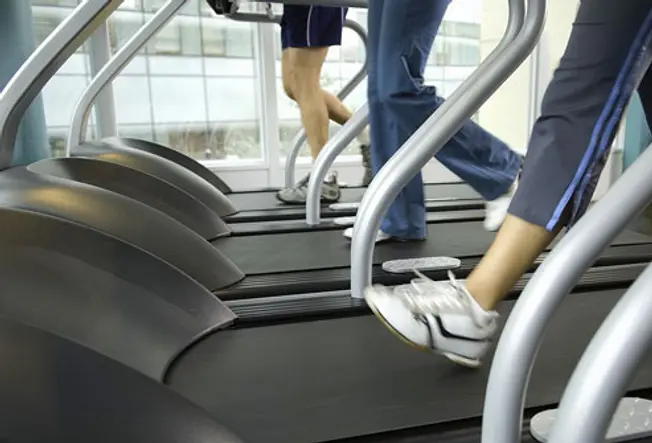
Treatment: Lifestyle Changes
10/19
Losing weight and walking regularly can ease the symptoms of spider veins and varicose veins. If swelling is a problem, try a low-salt diet to reduce water retention. Whenever possible, prop up your legs with a pillow or recliner, so they rest at or above the level of your heart.
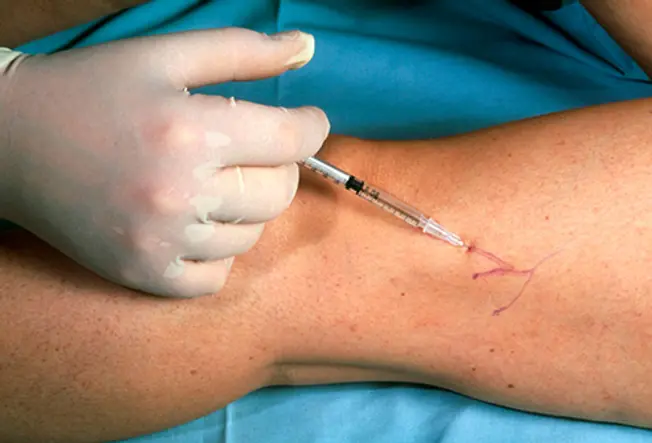
Treatment: Sclerotherapy
11/19
To treat varicose veins, your doctor may inject them with a sclerosant which causes irritation of the veins' linings and their subsequent destruction. The blood supply will naturally reroute in the affected area to compensate.
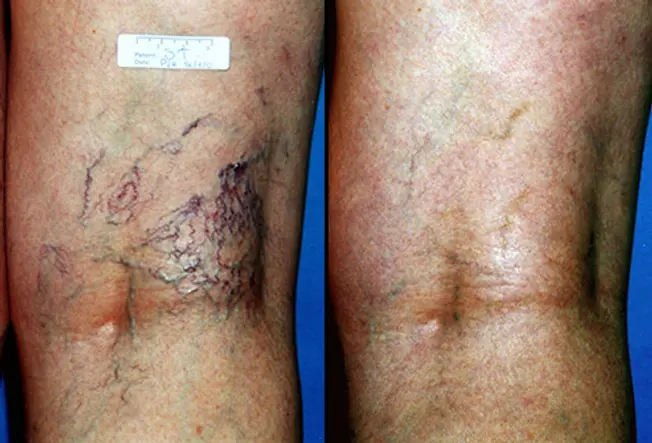
Sclerotherapy: Before and After
12/19
Most patients respond well to sclerotherapy with an estimated 50 and 80% of injected veins being eliminated with each session. With spider veins, you should see results in 3 to 6 weeks, and larger veins respond in 3 to 4 months.
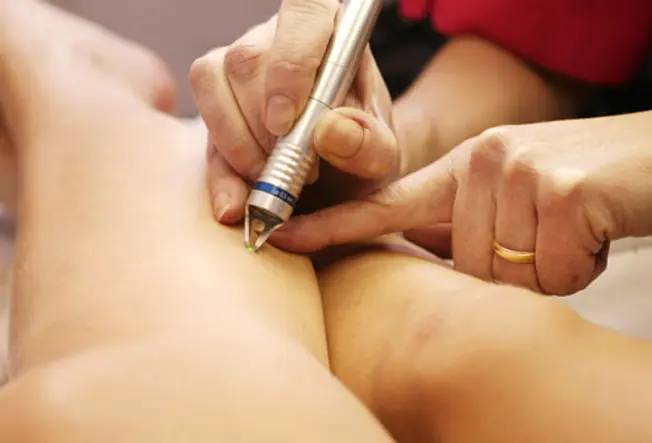
Treatment: Laser and Light Therapy
13/19
Laser therapy and intense light pulse (ILP) destroys tiny spider veins and small varicose veins with heat. The heat causes scar tissue to form, which eventually closes off the vein. For some patients, this is an appealing alternative to injections. Side effects may include minor discomfort in the treated area, skin discoloration, and the formation of blisters.
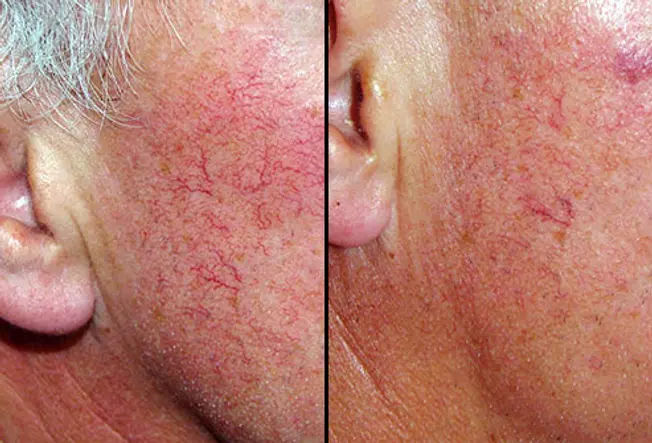
Laser Therapy: Before and After
14/19
Laser therapy is another popular option for treatment of small telangectasias of the face. The laser targets the red cells inside the vessel to heat the inside of the vein to destroy it. You will usually need three or more treatments.
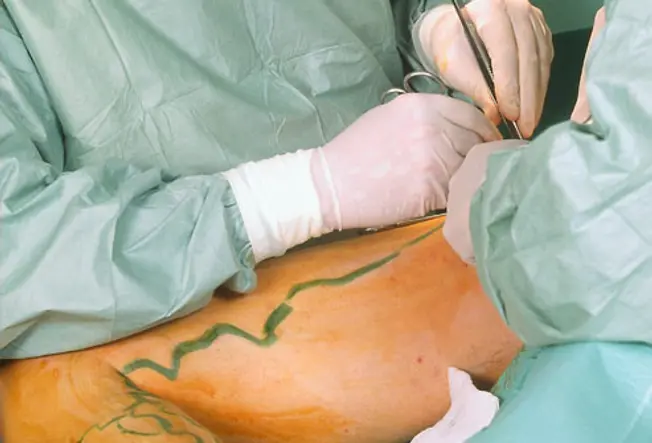
Treatment: Vein Surgery
15/19
For varicose veins that do not respond only to sclerotherapy or laser therapy, surgery is an option. The common procedure is ligation and stripping -- tying off a vein and removing the problematic segment. This may be done with local or general anesthesia. If the vein is near the skin's surface, it may be possible to remove it through a tiny incision that does not need stitches.

Vein Surgery: Before and After
16/19
Vein ligation and stripping successfully removes varicose veins in most people. The procedure does not require a hospital stay, and most patients can return to work in a few days. It's important to consider that surgery done for cosmetic reasons may not be covered by insurance. In addition, there are now less invasive techniques for eliminating large varicose veins.
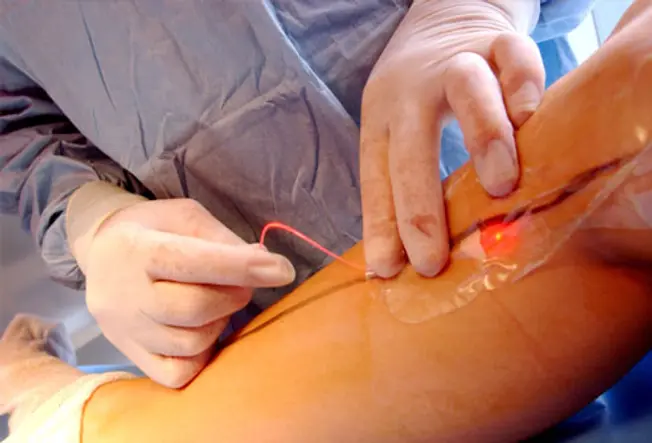
Treatment: Endovenous Laser
17/19
Endovenous laser is a new alternative for veins that were once only treatable by surgery. A small laser fiber is placed inside the vein, pressure is placed on the vein, and the laser delivers pulses of laser light. This causes the vein to collapse. Studies suggest endovenous laser is effective 98% of the time. Patients also report less pain and a quicker recovery than with ligation and stripping.
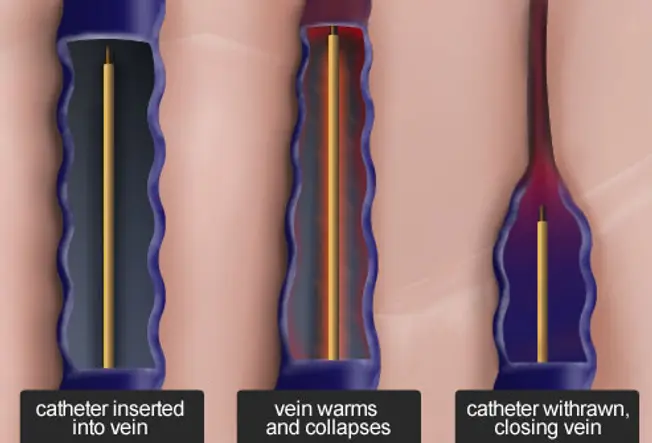
Treatment: Radiofrequency Ablation
18/19
Radiofrequency ablation is another option for large varicose veins. The principle is similar to endovenous laser. A small catheter delivers radiofrequency energy (instead of laser energy) directly into the vein wall, causing it to heat up and collapse. After about a year, the vein disappears. The results are comparable to vein surgery, but there is less risk and pain.

Preventing Spider/Varicose Veins
19/19
Getting plenty of exercise is the best way to ward off spider veins and varicose veins. Exercise helps keep your weight under control and your leg muscles toned, so your blood will flow freely. If your job keeps you on your feet, stretch your leg muscles often to increase circulation. And if you're pregnant, try to sleep on your left side rather than your back.
WEBMD IMAGE POLICY: WebMD's before and after pictures come from reputable physicians and medical text books with the full consent of each patient. Photographs have not been altered or enhanced in any way, except to crop them to fit our space or for modesty. Each set shows the same person. No doctor can guarantee the same results because treatments produce a unique outcome for each individual. IMAGES PROVIDED BY: (1) Original photograph by Toby Maudsley / Iconica REFERENCES: WebMD Medical Reference: "Understanding Varicose Veins – the Basics." WebMD Medical Reference: "Varicose Veins and Spider Veins." WebMD Medical Reference from Healthwise: "Varicose Veins – Topic Overview." WebMD Medical Reference: "Cosmetic Surgery for the Legs." WebMD Medical Reference provided in collaboration with the Cleveland Clinic: "Sclerotherapy for Varicose and Spider Veins." WebMD Medical Reference provided in collaboration with the Cleveland Clinic: "Skin Conditions: Sclerotherapy." WebMD Medical Reference from Healthwise: "Vein Ligation and Stripping." WebMD Medical Reference from Healthwise: "Laser Treatment for Varicose Veins." WebMD Medical Reference from Healthwise: "Radiofrequency Ablation for Varicose Veins." WebMD Medical Reference: "Understanding Varicose Veins – Prevention." National Heart, Lung and Blood Institute Medline Plus / National Library of Medicine Office on Women's Health in the Office of the Assistant Secretary for Health at the U.S. Department of Health and Human Services DermNet NZ Cleveland Clinic American Academy of Dermatology Show Sources
(2) SPL / Photo Researchers, Inc.
(3) Medicimage
(4) Halli Vervinder / Dorling Kindersley
(5) Andrew Olney / Riser
(6) Copyright © BSIP / Phototake -- All rights reserved.
(7) Dr. P. Marazzi / Photo Researchers, Inc.
(8) Copyright © BSIP / Phototake -- All rights reserved.
(9) N Aubrier / age footstock
(10) Darryl Leniuk / Digital Vision
(11) SCIENCE PHOTO LIBRARY / Science Source
(12) Reproduced with permission from ©DermNet NZ www.dermnetnz.org 2022
(13) Michael Donne / Photo Researchers, Inc.
(14) Reproduced with permission from ©DermNet NZ www.dermnetnz.org 2022
(15) Copyright © BSIP / Phototake -- All rights reserved.
(16) Photo courtesy of Hormoz Mansouri, MD/ Long Island Laser Center for Vein Treatment
(17) PHANIE / Photo Researchers, Inc.
(18) WebMD
(19) John Kelly / Iconica
Source: https://www.webmd.com/skin-problems-and-treatments/ss/slideshow-spider-varicose-veins
0 Response to "Legs Have Blue and Red Veins Showing Through at Foot"
Post a Comment